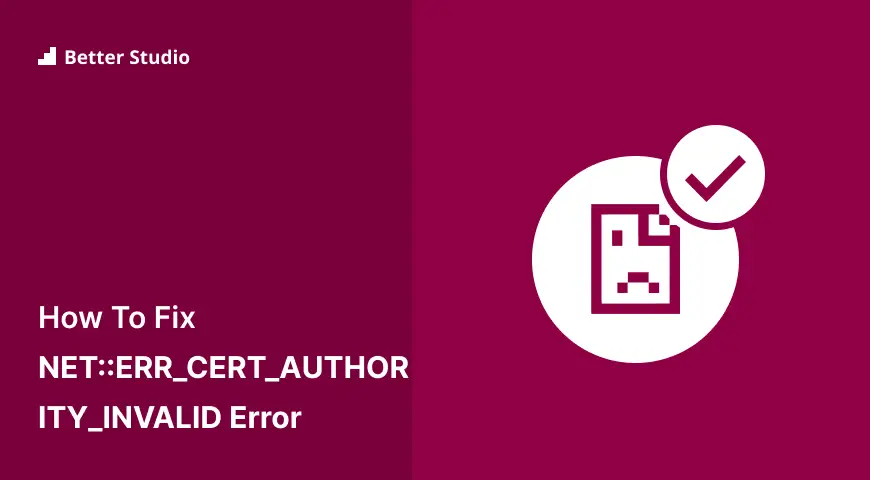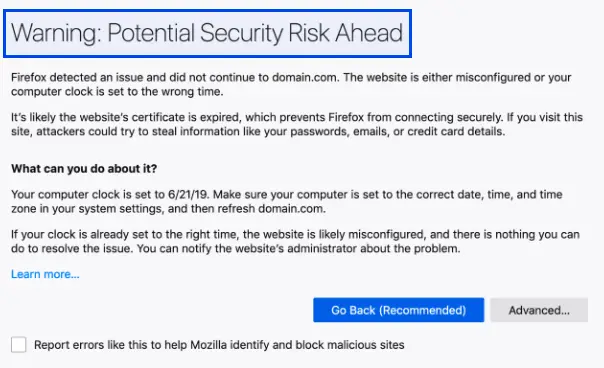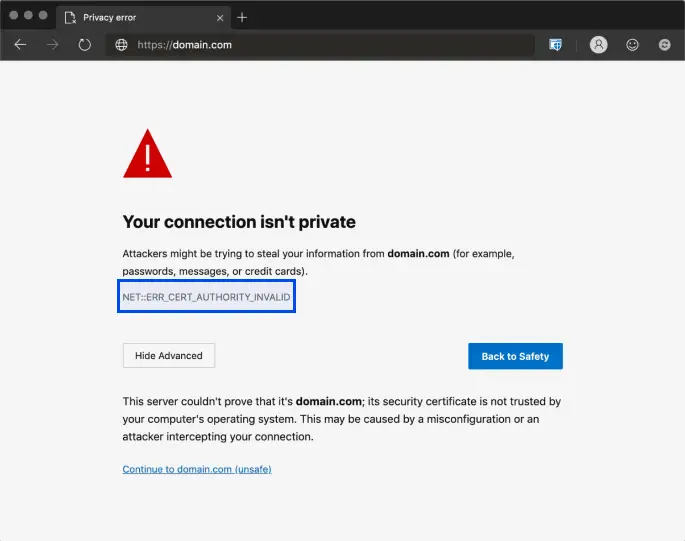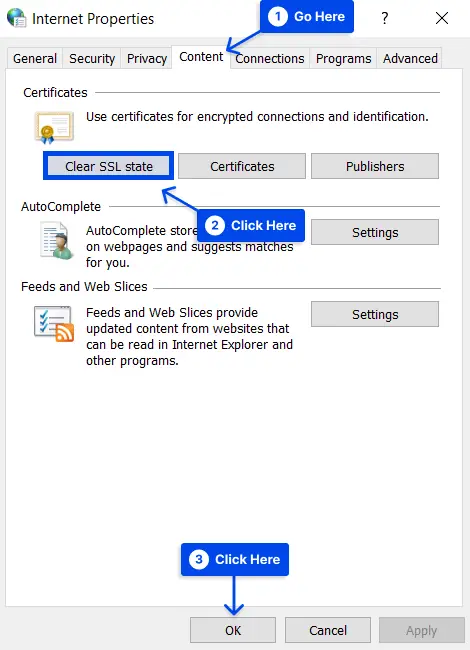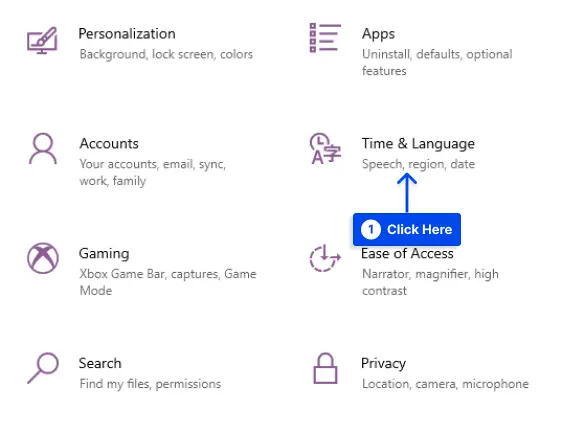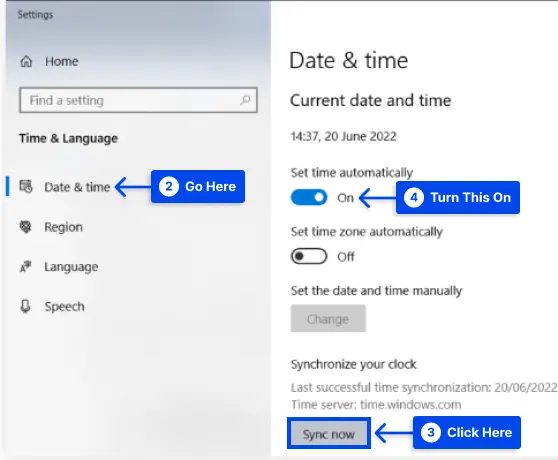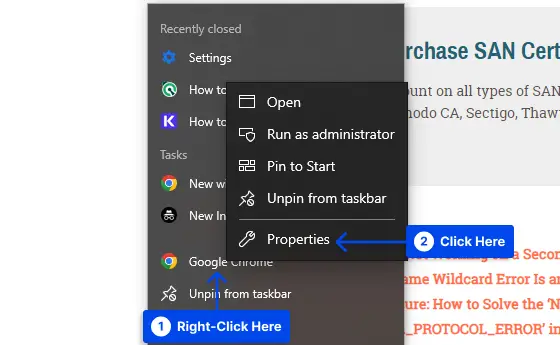How can you fix the NET::ERR_CERT_AUTHORITY_INVALID error? There are several situations where this error occurs when visiting a website that does not support Secure Sockets Layer (SSL).
In the case of website owners, this error may negatively affect traffic and conversions since the site will become inaccessible to visitors.
The objective of this article is to explain what the NET::ERR_CERT_AUTHORITY_INVALID error is, its variations, and ten proven methods for fixing it.
What Is NET::ERR_CERT_AUTHORITY_INVALID?
NET::ERR_CERT_AUTHORITY_INVALID indicates that a browser cannot validate a certificate for a particular site.
There are a few SSL-related errors that can cause this invalid error, including:
- Using a self-signed SSL certificate: Self-signed certificates can be cost-effective but not provide authority or assurance.
- An untrustworthy certificate authority: The browser will perform a security check of the SSL certificate when the user accesses a website. The browser will display an invalid error message if the certificate authority is not trusted.
- An incorrect installation of the certificate: It is often the result of switching from HTTP to HTTPS that you experience this error.
- Expired SSL certificates.: Depending on the SSL certificate, the expiration date may differ. In some cases, the license lasts for a lifetime; in others, it must be renewed annually. Ensure that your certificate has not expired by contacting your provider.
Note: Implementing WordPress SSL is essential in protecting your website data from cyberattacks.
Although SSL certificates contribute to this error, they are not the only cause.
It may be caused by a variety of factors on the client’s side, including:
- An unsecured network connection: It is important to note that free WiFi in public places does not provide secure traffic routing. The use of public internet access may therefore cause your browser to return a NETERR_CERT_AUTHORITY_INVALID error code.
- An outdated operating system: Using an outdated operating system may cause your browser to refuse to load pages for security reasons.
- Expired cache in the browser: It is possible that browsers cannot validate an SSL certificate if they have expired cookies and cache.
- Using third-party applications: It is possible that third-party programs, such as a virtual private network (VPN), antivirus software, or browser extensions, may interfere with internet connectivity.
Most of the time, this error can be resolved by changing the settings on your computer or browser.
Before diving deeper into the solution methods, let’s consider the variations of this error.
NET::ERR_CERT_AUTHORITY_INVALID Error Variations
How an error appears based on your browser type can differ. The error messages may also affect your operating system and the configuration of your certificate.
Considering this, let’s examine the most common variations of the NETERR_CERT_AUTHORITY_INVALID error across browsers.
Google Chrome
In Chrome, if you encounter this error, the browser will inform you that your connection is not private right away. As the browser cannot recognize the certificate’s validity, your data cannot be encrypted.
Therefore, if you continue, you do so at your own risk. Here is a screenshot of the error message:
There are several common variations of this error in Chrome, including the following:
- NET::ERR_CERT_AUTHORITY_INVALID
- NET::ERR_CERT_COMMON_NAME_INVALID
- NET::ERR_CERT_WEAK_SIGNATURE_ALGORITHM
- NET::ERR_CERTIFICATE_TRANSPARENCY_REQUIRED
- NET::ERR_CERT_DATE_INVALID
- SSL CERTIFICATE ERROR
Whenever the error occurs, Chrome identifies the source within the certificate as the source of the error. You can proceed to the website in the browser but are warned against doing so.
Mozilla Firefox
Firefox does not waste time informing you that you may have encountered a security issue. In addition, this browser offers a much better explanation of the potential causes and advice regarding how to proceed.
The main error message appears as follows:
It is important to note that the error does not include a specific code, though in most cases, the screen will also display one of the following codes:
- SEC_ERROR_UNKNOWN_ISSUER
- SSL_ERROR_RX_MALFORMED_HANDSHAKE
- MOZILLA_PKIX_ERROR_KEY_PINNING_FAILURE
- SEC_ERROR_REUSED_ISSUER_AND_SERIAL
It is advised that if you encounter an error code such as the one above, you copy it. It is the browser’s way of informing you of the cause of the error.
The search for a specific error code is often sufficient for finding a quick resolution in our experience.
Microsoft Edge
If you are familiar with Microsoft Edge error messages, this one should be familiar to you. There are almost no differences between it and the message Chrome displays:
Additionally, the error can present in a variety of forms, including:
- DLG_FLAGS_SEC_CERTDATE_INVALID
- DLG_FLAGS_INVALID_CA
- DLG_FLAGS_SEC_CERT_CN_INVALID
- NET::ERR_CERT_COMMON_NAME_INVALID
- ERROR CODE: O
You can analyze these error messages, just as you can with Chrome, to determine why you are receiving NETERR_CERT_AUTHORITY_INVALID messages.
Safari
Safari users will encounter the ‘this connection is not private‘ error, which indicates a problem with the website’s certificate and encryption.
Here’s how the message appears:
A certificate that has expired is the cause of this error. The NETERR_CERT_AUTHORITY_INVALID error is commonly caused by expired certificates, as discussed previously.
How to Fix the NET::ERR_CERT_AUTHORITY_INVALID Error?
Now that we have a better understanding of what causes the NETERR_CERT_AUTHORITY_INVALID error and how it appears on different browsers let’s look at how to resolve it.
The purpose of this section is to discuss possible solution methods for server-side or SSL errors, as well as client-side or browser errors.
Method 1: Run an SSL Test
Make use of a free tool such as SSL Shopper to identify the source of the problem by performing an SSL check. Follow these steps to do this:
- Enter the domain name in the tool.
- Click on the Check SSL button.
- Wait for a few minutes until the analysis is complete.
SSL Shopper will generate a report containing information about the site’s SSL installation, such as the expiration date of the IP address certificate trustworthiness and the validity of the domain name.
The tool will display green checkmarks when no issues are detected that indicates:
- The majority of web browsers trust SSL certificates.
- SSL certificate is not expired.
- SSL certificate correctly lists the domain name.
The tool will also detect whether or not you are using a self-signed SSL certificate or if your domain name does not match the one in your certificate, as well as how to resolve these issues.
Method 2: Get a Certificate from a Valid Authority
Currently, there is no justification for using a self-signed certificate. If cost is your only concern, you may receive a free certificate.
However, some websites require more than a free certificate. Free certificates must be renewed frequently, which can be time-consuming.
A premium certificate offers more features, such as insurance against data breaches, encryption for multiple domains, and so forth.
A premium SSL certificate may be well worth the investment for eCommerce sites. If you purchase a certificate, ensure that it is issued by a proper authority to avoid experiencing the NETERR_CERT_AUTHORITY_INVALID error.
Method 3: Clear the SSL State
A copy of the certificate from a website is stored on your computer when you visit it. There may be instances in which it stores inaccurate or outdated details, leading to errors.
The SSL state can be cleared to remove all cached certificates on your computer. Follow these steps to do this in Windows:
- Go to Internet Options in Control Panel.
- Go to the go to the Content tab.
- Click on the Clear SSL State button.
- Click on the OK button.
In macOS, you need to delete any untrusted certificates causing issues. Follow these steps to do this:
- Click on the Spotlight search icon at the top of your screen.
- Type Keychain Access.
- Select Certificates under the Category section.
- A red “X” icon indicates untrusted certificates.
- Right-click on it and select Delete.
Method 4: Renew the SSL Certificate
Renewing SSL certificates is necessary to re-establish the validity of a domain and update its encryption. It is important to note that SSL certificate renewal periods vary from provider to provider.
Follow these steps to check the certificate’s expiry date:
- Go to your website.
- Click on the padlock icon in the address bar.
- Check with your web hosting provider and certificate authority if you have an expired SSL certificate to renew it.
There are typically three steps involved in the process:
- The generation of a new certificate signing request (CSR)
- The activation of the new certificate
- Its installation
Method 5: Try Reloading the Page
If neither of the above solutions has been effective, reload the webpage to resolve the issue.
It has been observed that, in most cases, the NET::ERR_CERT_AUTHORITY_INVALID error disappears on its own when the page is reloaded. If you are interested, it only takes a few seconds, so why not try?
If the error persists despite several reloads, you may need to try accessing the website using an “incognito mode” if your browser supports this feature.
In incognito mode, the website should load fine. The error may be related to the browser’s attempt to load an outdated cached page version.
Method 6: Clear Google Chrome’s DNS Cache
Follow these steps to clear Google Chrome’s DNS cache to fix the NET::ERR_CERT_AUTHORITY_INVALID error:
- Open Google Chrome.
- Type chrome://net-internals/#dns in the address bar and press the Enter key.
- Click on the Clear host cache button.
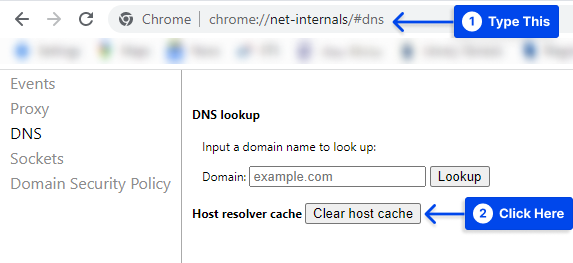

Method 7: Adjust the Time and Date Settings on Your PC
To verify the validity period of a certificate, browsers rely on the operating system’s time. The browser can misidentify an expired certificate if the system date is incorrectly set.
Follow these steps to adjust the time and date on Windows:
- Go to Time & Language in your Windows Settings.
- Go to Date & time.
- Click Sync now under the Synchronize your clock section.
- Turn on Set time automatically to ensure your computer’s time is always right.
Follow these steps to do this in macOS:
- Open the Apple menu.
- Go to System Preferences.
- Go to Date & Time.
- Activate the Set date & time automatically.
- Go to Time Zone and check whether you use the correct time zone.
- Ensure that the time and date are correctly set on your operating system.
- Refresh the browser to see if the error is resolved.
Method 8: Try Using a Different Network
The NETERR_CERT_AUTHORITY_INVALID error may appear when you use a publicly accessible network, such as those available in coffee shops and tourist attractions.
There is a tendency for these networks to fail to route traffic securely, which may cause the error to occur.
The best way to access your website on a public network is by using your smartphone’s mobile data if you are using a public network for your computer.
Your investigation aims to determine whether the original network was involved in the problem. The error will disappear when you use mobile data, indicating that you need to change networks.
In addition, if you frequently access the internet through public access, you may sign up for a Virtual Private Network (VPN) to protect your privacy.
If you access your data from an insecure point of access, a good VPN service will help keep it safe.
There will be a cost involved if you wish to use a quality VPN service, but it may be worth the expense if you are always on the go.
Method 9: Check Anti-virus / Firewall
There are times when anti-virus software interferes with SSL security since it blocks HTTPS services.
Follow these steps to solve this issue:
- Disable HTTPS scanning and SSL scanning from the settings menu of your anti-virus program. The HTTPS scanning option may not be available, so the anti-virus and firewall must be turned off for a while, although this may be risky.
- Re-open the site and turn “On” the anti-virus software and firewall again after resolving the error.
Method 10: Temporarily Ignore the Error Message
By performing this method, you can ignore the error messages displayed on your browsers. It should be noted that this is not a solution at all.
Follow these steps to ignore the message temporarily:
- Right-click on the Chrome icon.
- Click on Properties.
- Select the Shortcut tab.
- Go to the Target field and write -ignore-certificate-errors after \chrome.exe.
- Click on the OK button.
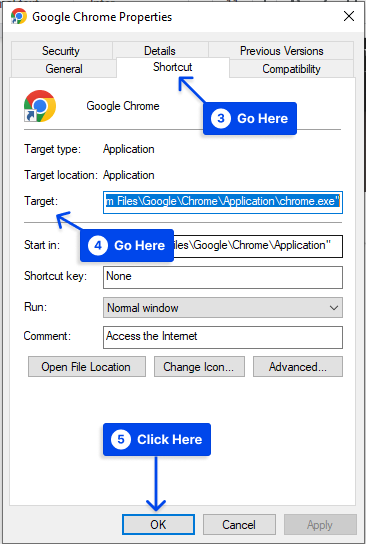

- Restart your browser.
Conclusion
This article has explained what the NETERR_CERT_AUTHORITY_INVALID error is, its variations, and ten proven methods for fixing it.
We are grateful for the time you have taken to read this article. The comments section also is open to questions and comments.
It will be possible for you to keep up with our most recent articles by following our Facebook and Twitter pages.



